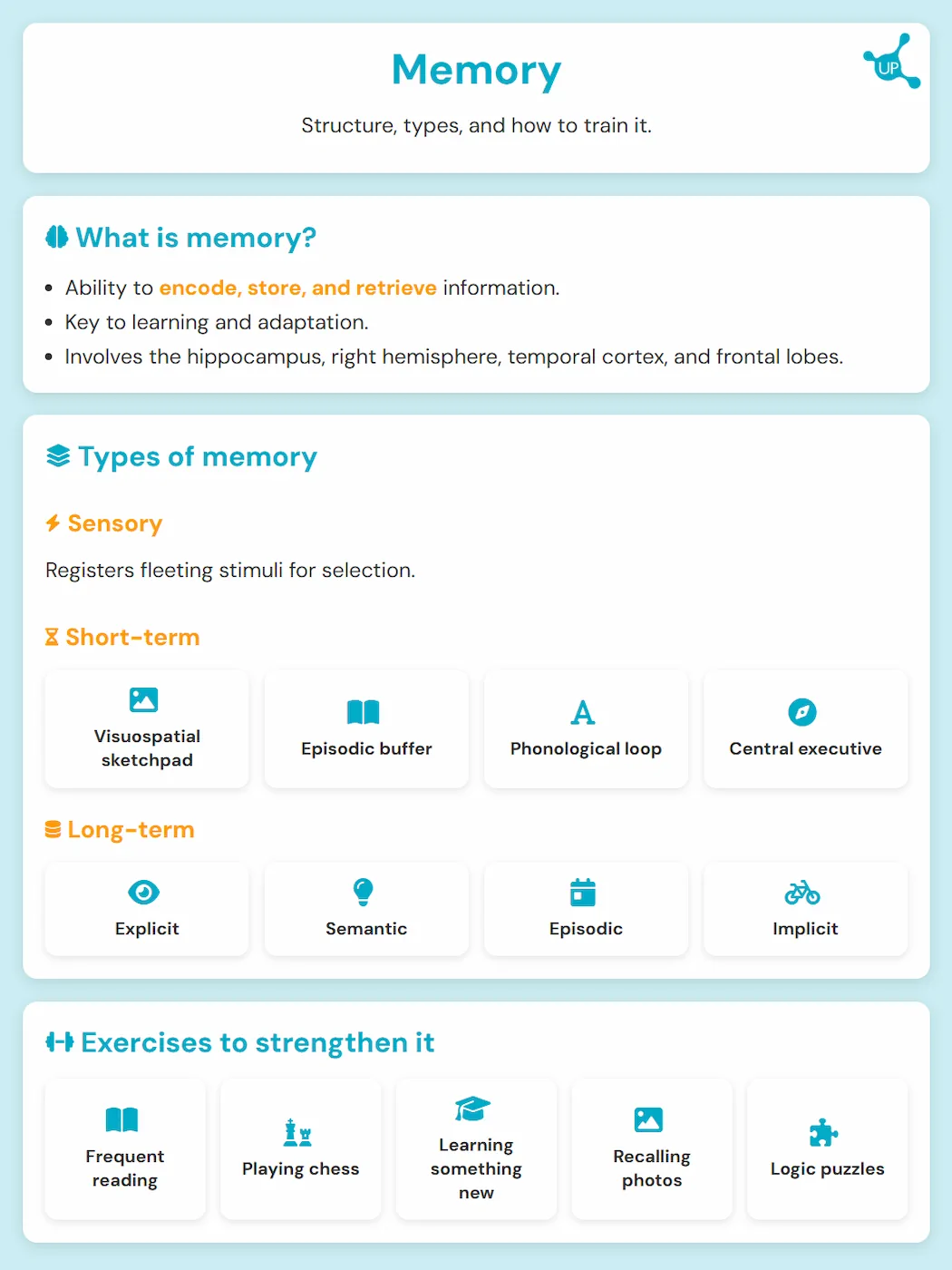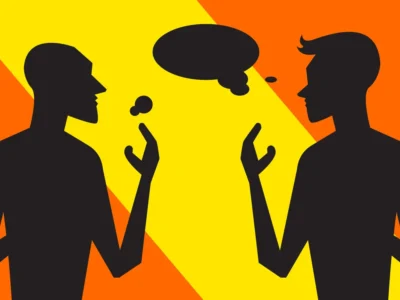In many ways, our memories make us who we are; they are our essence as human beings. But for those memories to endure, they rely on memory, a concept that, although familiar to everyone, we do not fully understand. In this article, we will seek to explore it with greater precision.
What is memory?
It refers to a mental capacity whose function is to encode, store, and retrieve information. That is, it allows us to preserve within us experiences such as feelings, events, images, or ideas. Ultimately, any element that belongs to our past.
It is a brain function that is essential for our learning and, therefore, for our survival. Thanks to it, we can better adapt to the demands of our environment.
From a morphological point of view, memory is closely linked to the hippocampus, but it should be noted that several brain regions influence the process. It is interesting to mention that word meanings are stored in the right hemisphere, childhood memories are preserved in the temporal cortex, and the frontal lobes are responsible for perception and thought.
Types of memory
We have three different types, according to the multi-store model by Richard Atkinson and Richard Shiffrin, which states that information passes through different stores as it is processed. Therefore, we make the following division.
Sensory memory
Short-lived, it records information through the senses. It processes a large number of stimuli, which remain for the time necessary for their selection and identification for subsequent processing.
Short-term memory
Also known as working memory. Its capacity is limited, able to retain only a few items for a brief period of time. This type is broken down into four parts.
- Visuospatial sketchpad. It is responsible for the active maintenance of information (images). It takes place, for example, when learning a route.
- Episodic buffer. It is a system specialized in integrating information from various sources. In this way, it represents visual, verbal, spatial, and temporal information.
- Phonological loop. It operates with verbal information. It facilitates the maintenance of the internal speech process involved in short-term memory, as happens when we memorize a telephone number.
- Central executive. Its role is to control and regulate the working memory system.
Long-term memory
This is the one that allows us to retain information for the longest time. Within this, we distinguish four types.
- Explicit memory. It is the conscious storage of information. It is present in the recognition of people, places, things, and all that entails.
- Semantic memory. It encompasses all the general knowledge we have gathered throughout our lives. It is required for language use. An example would be knowing that Rome is the capital of Italy.
- Episodic memory. It is characterized by the recall of personal events or experiences, such as the day of our wedding.
- Implicit memory. It is the unconscious storage of information. It refers to actions we perform automatically, such as riding a bicycle.
How to work on memory?
Sometimes we forget certain things like a person’s name or where we left our phone. Often, these are mere lapses, but if the frequency of these incidents increases, it could be a sign of cognitive decline. Fortunately, we can improve the performance of our memory through training. If exercised regularly, it is possible to enhance it and even prevent its deterioration.
There are different exercises that allow training this mental process.
Reading
Reading is highly recommended, as it helps stimulate different areas of the brain, including memory. Furthermore, it increases storage capacity and fosters the creation of new neural connections. Reading is to memory what running is to a runner.
Chess
Playing chess is beneficial because it stimulates the hippocampus and improves communication between the different hemispheres due to the neural change that activates a set of brain pathways. In other words, we become experts at long-term information retention.
New knowledge
Learning drives new synaptic connections, thereby strengthening our brain. Engaging in a new activity, such as learning to play an instrument, is beneficial because it keeps our mind active.
Viewing photographs
The exercise consists of looking at images and trying to remember the events associated with them. It is a simple and very useful practice. It should be noted that the older the photo, the greater the challenge.
Hobbies
Puzzle games like Sudoku or crosswords are both fun and beneficial. They enhance and strengthen memory as well as other areas like language and calculation.
Cognitive assessment and stimulation
Consulting a specialist in case of cognitive decline is essential. The professional will put their expertise at your service to find the best method to work on memory through cognitive stimulation.
Cognitive stimulation encompasses all activities aimed at maintaining or improving mental functioning and slowing deterioration through various exercises with the help of stimulation programs. At NeuronUP, we offer a wide variety of cognitive stimulation exercises focused on memory training.
Associated with episodic memory, one of the exercises is “animal pairs”, which involves finding matching pairs among a set of cards face down. Additionally, it works on working memory and selective attention. Another activity, in this case related to semantic memory, is “common elements”, which is based on selecting a series of specific items from a group of stimuli.









 10 Cognitive Stimulation Activities for People with Parkinson’s Disease
10 Cognitive Stimulation Activities for People with Parkinson’s Disease
Leave a Reply